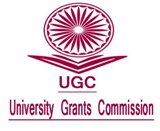Determinants of Knowledge Level on Kiwi Cultivation Practices in Phek District of Nagaland
DOI:
https://doi.org/10.26725/JEE.2023.2.35.7005-7012Keywords:
Farming experience; Kiwi growers; Knowledge index; Training exposure; NagalandAbstract
The paper examines the knowledge level of kiwi growers and its determinants in Nagaland. The study was conducted among kiwi growers in Phek district of Nagaland during 2023-24 and the sample size was 120. A knowledge test index was adapted with suitable modification. More than half of the respondents were above 50 years of age, majority were illiterate, had marginal size of land under kiwi, had ‘medium’ farming experience and had an average annual income of Rs. 139391.67. The findings of the study concluded that majority of the respondents had ‘fair or moderate’ level of knowledge on kiwi cultivation and the determinants of knowledge level on kiwi cultivation were education, extension contact, training exposure & farming experience.References
Dhakal, A. R., Mahatara, B., Parajuli, S., Budhathoki, S., Paudel, S., & Regmi, S. (2021). Farmers’ knowledge level and readiness in adoption of dragon fruit (Hylocereus sp.) in Chitwan district, Nepal. Food and Agri Economics Review (FAER), 1(1), 57-63. http://doi.org/10.26480/faer.01.2021.57.63
Directorate of Economics and Statistics. (2021). Nagaland statistical book, Directorate of Economics and Statistics, Nagaland, Kohima.
Feder, G., Just, R. E., & Zilberman, D. (1985). Adoption of agricultural innovations in developing countries: A survey. Economic Development and Cultural Change, 33(2), 255-298
Ferguson, A. R., & Stanley, R. (2003). Kiwifruit. In: B. Caballero, L. Trugo & P. Finglas (eds.) Encyclopedia of Food Sciences and Nutrition. Academic Press, London
Giri, M., Rawat, G., & Sharma, A. (2021). Constraints faced by the kiwi fruit farmers in Ilam Municipality and Sandakpur rural municipality of Ilam district. Food and Agribusiness Management, 2(2), 54-61. http://doi.org/10.26480/fabm.02.2021.54.61
Hoque, M. N., Saha, S. M., Imran, S., Hannan,A., Seen, M. M. H., Thamid, S. S., & Tuz-zohra, F. (2022). Farmers’ agrochemicals usage and willingness to adopt organic inputs: Watermelon farming in Bangladesh. Environmental Challenges, 7, 1-24. https://doi.org/10.1016/j.envc.2022.00451
Kaur, S., Singh, G., & Gill, S. J. (2020). Perceived knowledge level of the farmers about fruit cultivation practices and perception towards fruit nutrition garden. Journal of Community Mobilization and Sustainable Development, 15(3), 741-744.
Koyu, B., Singh, J. R., Devarani, L., Singh, R., & Hemochandra, L. (2019).Developing an intellectual learning scale to test knowledge level of kiwi growers of Arunachal Pradesh on package of practices of kiwi. Current Journal of Applied Science and Technology, 32(6), 1-6
Kumar, J. S., & Konyak, W. C. (2024). Enhancing Horticulture and Floriculture Farming in Nagaland: Schemes and Implementations. International Journal of Agriculture Innovations and Research, 12(5), 190 – 204.
Malla, S., Bista, L., & Sapkota, R. (2017). Prospects of kiwi production and marketing in the advancement of household economy in Dolakha district. Turkish Journal of Agriculture, 10(10), 2039-2044.
Mathew, G. S., & Thomas, A. (2020). Extent of Knowledge of Coconut Farmers in Kozhikode District of Kerala. Journal of Extension Education, 32(3), 6579-6582. DOI:https://doi.org/10.26725/JEE.2020.3.32.6579- 6582
Mishra, L. M., & Shukla, N. U. (2014). Kiwi: An organic fruit. Popular Kheti, 2(2).
Raja, W. H., Noomphy, M., Bam, G., Nabi, S. U. N.,Sharma, O. C., Mir, J. I., Shah, M. A., & Madhu, G. S. (2021). Potential and prospects of Kiwifruit production in the state Arunachal Pradesh. The Pharma Innovation Journal, 10(12), 1749-1751.
Rogers, E. M. (2003). Diffusion of Innovations (5th ed.). Free Press, New York.
Shah, Z. A., Singh, R., Dar, M. A., Mir, R., Matoo,J. M., & Beigh, M. A. (2017). An analysis of knowledge level of farmers of recommended apple cultivation practices in district Shopian of Jammu and Kashmir India, Journal of Entomology and Zoology Studies, 5(6), 867- 871.
Sharma, A., Thapa, S., & Khatiwada, M. P. (2020). Production, marketing and future prospects of kiwifruit in Nepal. International Journal of Applied Sciences and Biotechnology, 8(2), 179-186. DOI: 10.3126/ijasbt.v8i2.29083
Shukla, A. K., Pramanick, K. K., Watpade, S. G., & Verma, J. (2018). Performance of Kiwi in Mid Hill Region of Himachal Pradesh. International Journal of Tropical Agriculture, 36(3),615-617
Sureshverma, R., Samuel, G., Rao, I. S., Vidyasagar, & Chary, S. (2018). Construction of Knowledge Test to Measure the Knowledge on Recommended Groundnut Production Practices. Journal of Extension Education, 30(3), 6129-6136. https://doi.org/10.26725/JEE.2018.3.30.6129-6136
Thongkaew, S., Jatuporn, C., Sukprasert, P., Rueangrit, P., & Tongchure, S. (2019). Factors affecting durian production of farmers in the eastern region of Thailand. International Journal of Extension Education, 9(2), 285-293. https:// doi.org/10.33687/ijae.009.02.3617
Yano, V., & Tsolo, K. (2015). Economic Contributions of Women in Traditional Naga Society. International Journal of Interdisciplinary and Multidisciplinary Studies (IJIMS), 2(6), 158-162.
Downloads
Published
How to Cite
Issue
Section
License
Copyright (c) 2023 https://creativecommons.org/licenses/by-nc-sa/4.0/

This work is licensed under a Creative Commons Attribution-NonCommercial-ShareAlike 4.0 International License.
Authors who publish with JEE agree to the following terms:
- Authors retain copyright and grant JEE right of first publication with the work simultaneously licensed under a Creative Commons Attribution License that allows others to share the work with an acknowledgement of the work's authorship and initial publication in this journal.
- Authors are able to enter into separate, additional contractual arrangements for the non-exclusive distribution of the journal's published version of the work (e.g., post it to an institutional repository or publish it in a book), with an acknowledgement of its initial publication in this journal.
- Authors are permitted and encouraged to post their work online (e.g., in institutional repositories or on their website) prior to and during the submission process, as it can lead to productive exchanges, as well as earlier and greater citation of published work (See The Effect of Open Access).
Extension Education Society
https://creativecommons.org/licenses/by-nc-sa/4.0/
This work is licensed under a Creative Commons Attribution-NonCommercial-ShareAlike 4.0 International License.













.png)

